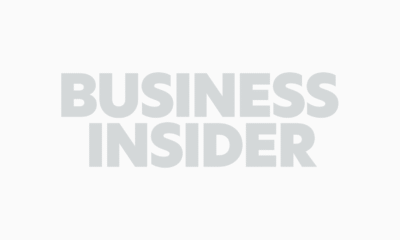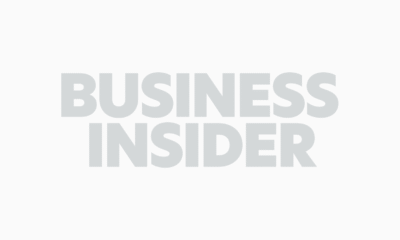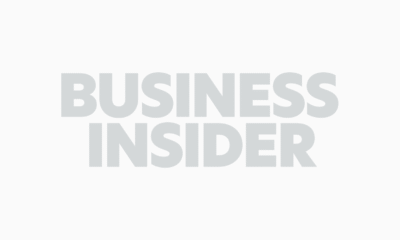Business
xAI reportedly laid off at least 500 AI tutors working on Grok
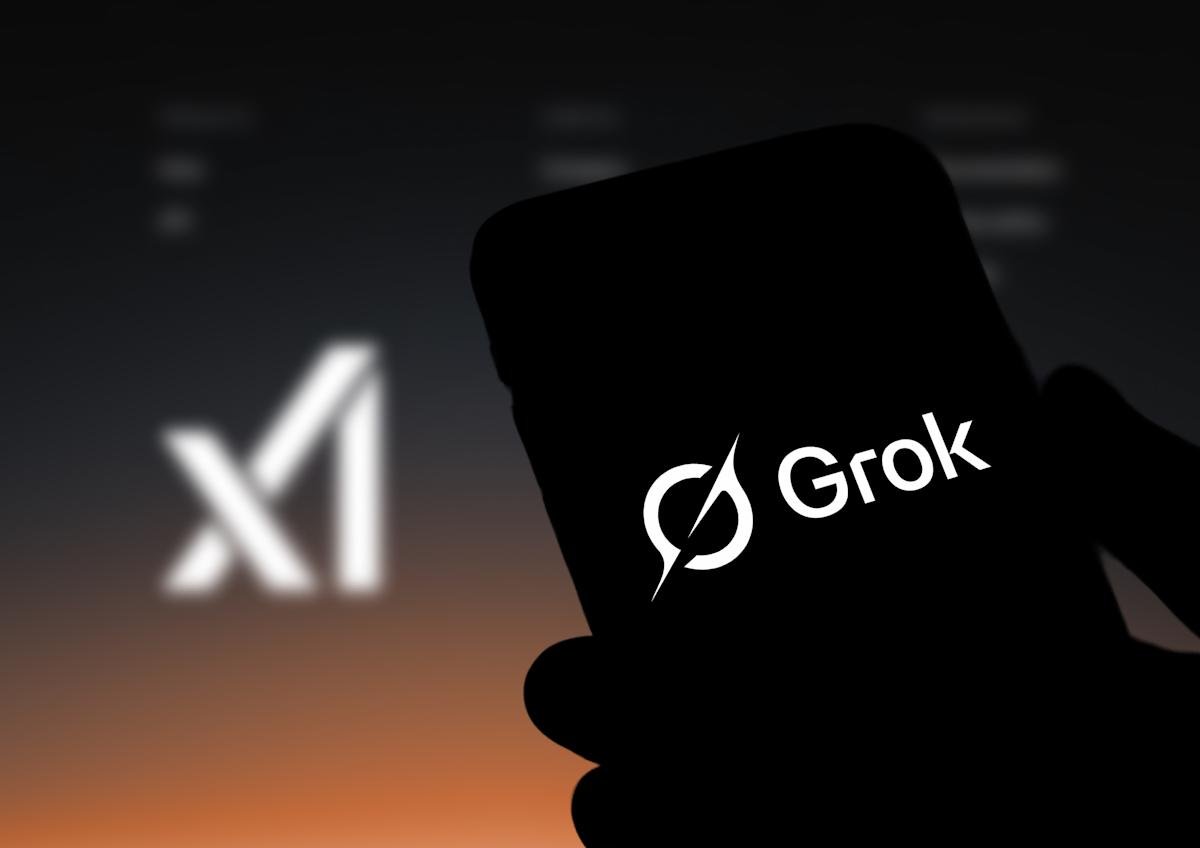
xAI has laid off at least 500 workers from its data annotation team, the company’s largest, according to Business Insider. The annotation team is in charge of categorizing and contextualizing raw data used to train Grok so that it can understand the world better. Business Insider says the laid off employees were informed via email on the evening of September 12, Friday, that it was going to downsize its team of general AI tutors. They were reportedly told that they would be paid their salaries until the end of their contracts on November 30, but their access to xAI’s systems had been cut off after they received the notice.
When Reuters asked the company for a comment, it referred to a post on X wherein it posted a call for specialist AI tutors instead. xAI said that it will “immediately surge [its] Specialist AI tutor team by 10x” and that it’s hiring across STEM fields. As specialist tutors, the new hires will be “enhancing [the company’s] AI technologies through high-quality inputs, labels and annotations using specialized software.” They’ll gather data and provide their own, not only in text format, but also through audio recordings and video sessions.
As Reuters has noted, the layoffs come after several high-profile departures from xAI, including the company’s chief financial officer Mike Liberatore. The company launched Grok 4 in July, calling it the “smartest AI in the world.” Elon Musk claimed during the model’s reveal that if you make Grok 4 take the SATs and the GREs, it would get near perfect results every time and can answer questions it’s never seen before. He also proclaimed that Grok is going to invent new tech maybe later this year, and that he would be shocked if it doesn’t happen next year.
Business
One of Apple’s top AI executives is reportedly leaving the company
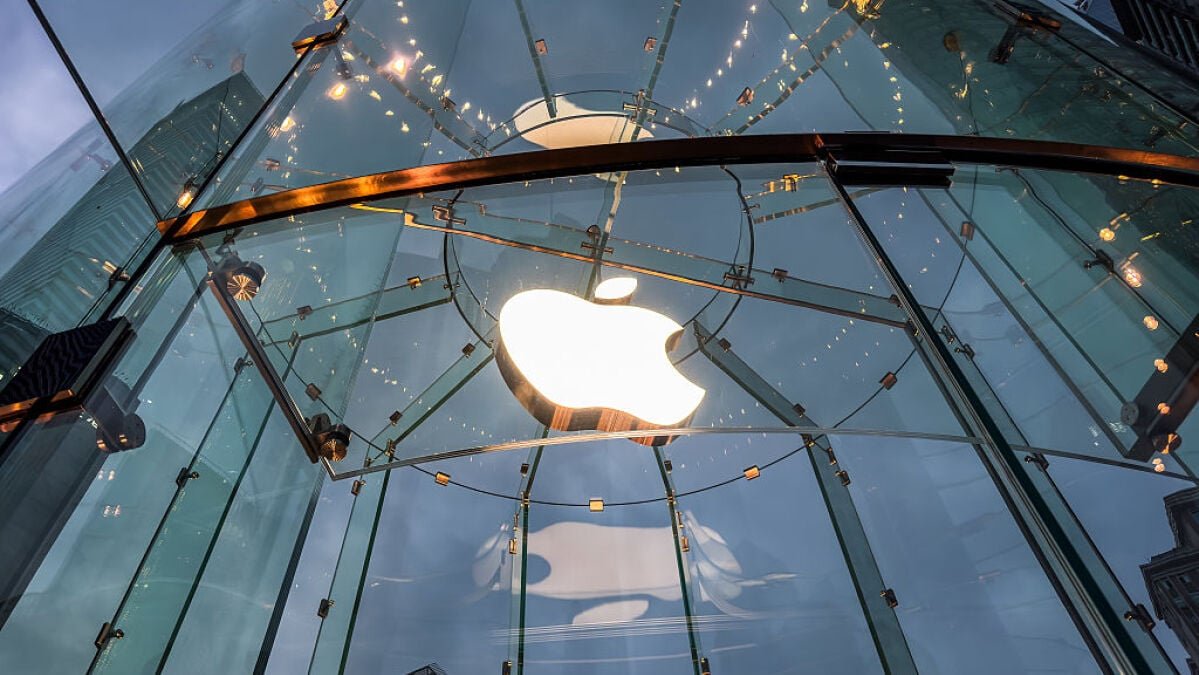
Apple is losing one of its top AI minds, according to Bloomberg.
Robby Walker, who had been the senior director of Apple’s Answers, Information, and Knowledge team since earlier this year, is reportedly set to leave the tech giant next month. Walker had previously been in charge of Siri prior to moving over to AI development. This is on top of Apple losing other high-level AI employees to Meta back in July, also reported by Bloomberg.
The report doesn’t give an explicit reason for why Walker or the other employees have left the company, but it certainly doesn’t paint an entirely positive picture of Apple’s AI development from the outside looking in. The company’s Apple Intelligence suite of AI features has notably lagged behind competitors like Google. One very noteworthy example is that Google’s Gemini Live naturalistic chatbot has been up and running for a while, even as Apple’s long-awaited AI-powered Siri upgrade has been reportedly delayed into next year.
Mashable Light Speed
It remains to be seen whether or not all of this AI business is a bubble just waiting to burst or something that’s truly here to stay, but at the pace Apple is moving, one might get the impression that the company is betting on the former.
Business
Elon Musk Just Said 80% of Tesla’s Value Will Come From This Artificial Intelligence (AI) Business, Which Jensen Huang Says Could Be Worth Trillions (Hint: It’s Not Robotaxi)

Key Points
-
Musk has long expressed grand ambitions in the world of artificial intelligence (AI).
-
One of Tesla’s main pursuits in the artificial intelligence realm is developing a fleet of autonomous robotaxis.
-
Nevertheless, Musk thinks most of Tesla’s future value will be derived by something else entirely.
Elon Musk is no stranger to bold statements. His comments, often hyperbolic, consistently capture far more attention than the standard rhetoric from corporate executives. Over the past several years, Musk has articulated a vision to evolve Tesla(NASDAQ: TSLA) beyond its roots as an electric vehicle (EV) and energy-storage company into a broader technology platform centered on artificial intelligence (AI).
At the heart of this strategy is Tesla’s push toward fully autonomous driving. While robotaxis dominate the conversation around Tesla’s AI roadmap, there is another opportunity quietly flying under the radar that could carry even greater implications: Optimus, the company’s humanoid robotics project.
Where to invest $1,000 right now? Our analyst team just revealed what they believe are the 10 best stocks to buy right now. Continue »
What once sounded like science fiction is slowly becoming a legitimate, tangible reality. Industry leaders such as Nvidia‘s Jensen Huang have pointed to the multitrillion-dollar potential at the intersection of AI and robotics. Musk has gone even further, asserting that Optimus could one day account for 80% of Tesla’s value once the platform is scaled.
For investors, this raises an important question: Is Optimus another example of Musk’s grandiose promises, or could it really become Tesla’s most impactful product ever?
Why are humanoid robots important in the broader AI narrative?
In recent years, much of the progress in artificial intelligence has come from the development of large language models (LLMs) capable of generating detailed, context-rich answers to user queries. While these systems have boosted efficiencies across certain workflows, they remain fundamentally reactive — waiting for prompts before offering value.
This limitation highlights why humanoid robotics is such an ambitious frontier. Unlike traditional industrial robots, humanoid robots are built with arms, legs, and advanced dexterity, enabling them to perform human-level tasks in real-world environments.
In many ways, humanoid robotics represent the closest manifestation of achieving generalized intelligence — AI that doesn’t just respond but actively engages with the physical world.
Image source: Getty Images.
What companies does Tesla Optimus compete with?
Thanks in part to Musk’s star power, Optimus has become an increasingly recognized prototype in the humanoid robot landscape. However, Tesla is far from alone in pursuing this technology.
Boston Dynamics — backed by Hyundai — continues to show off mobility and agility capabilities through its humanoid robot platform, Atlas.
Meanwhile, Figure AI — a start-up backed by AI heavyweights such as Microsoft, Nvidia, OpenAI, and Jeff Bezos — is building a competing humanoid system with an initial focus on manufacturing and logistics applications.
Could Optimus really account for 80% of Tesla’s future value?
Today, Tesla’s revenue and profitability are largely driven by its EV and energy-storage businesses. Optimus introduces an entirely new frontier: labor automation. Designed as a general-purpose worker, Optimus has the potential to support manufacturing and production on factory floors while also handling routine tasks in household settings.
The implications are twofold. Internally, deploying Optimus in its gigafactories could yield significant labor efficiencies — lowering operating costs and expanding profit margins as vehicle production scales. Externally, commercialization unlocks the doors to penetrating new markets such as logistics, retail, and healthcare — all areas where reliable labor needs are rising.
Unlike vehicles, which remain commoditized products subject to cyclical demand, Optimus could become a recurring, mission-critical asset for businesses seeking to offset labor shortages or inflationary costs. If successful, this would provide Tesla with a much-needed durable growth engine beyond its legacy auto and energy solutions.
This is why Musk contends that Optimus could ultimately become Tesla’s largest business. Recurring demand and the high-margin nature of robotics have the potential to dwarf even the most optimistic scenarios for Tesla’s car business, which will always face shifting consumer preferences and intense competition from other automakers.
If Tesla executes on its robotics pursuit, the upside could be enormous, potentially reaching $10 trillion, according to Musk. With that said, Optimus should still be viewed largely as a moonshot. The product remains years away from global adoption and is unlikely to move the financial needle for Tesla anytime soon.
Don’t miss this second chance at a potentially lucrative opportunity
Ever feel like you missed the boat in buying the most successful stocks? Then you’ll want to hear this.
On rare occasions, our expert team of analysts issues a “Double Down” stock recommendation for companies that they think are about to pop. If you’re worried you’ve already missed your chance to invest, now is the best time to buy before it’s too late. And the numbers speak for themselves:
- Nvidia:if you invested $1,000 when we doubled down in 2009,you’d have $461,190!*
- Apple: if you invested $1,000 when we doubled down in 2008, you’d have $44,486!*
- Netflix: if you invested $1,000 when we doubled down in 2004, you’d have $640,916!*
Right now, we’re issuing “Double Down” alerts for three incredible companies, available when you joinStock Advisor, and there may not be another chance like this anytime soon.
*Stock Advisor returns as of September 8, 2025
Adam Spatacco has positions in Microsoft, Nvidia, and Tesla. The Motley Fool has positions in and recommends Microsoft, Nvidia, and Tesla. The Motley Fool recommends the following options: long January 2026 $395 calls on Microsoft and short January 2026 $405 calls on Microsoft. The Motley Fool has a disclosure policy.
Business
Elon Musk Just Said 80% of Tesla’s Value Will Come From This Artificial Intelligence (AI) Business, Which Jensen Huang Says Could Be Worth Trillions (Hint: It’s Not Robotaxi)

Key Points
-
Musk has long expressed grand ambitions in the world of artificial intelligence (AI).
-
One of Tesla’s main pursuits in the artificial intelligence realm is developing a fleet of autonomous robotaxis.
-
Nevertheless, Musk thinks most of Tesla’s future value will be derived by something else entirely.
Elon Musk is no stranger to bold statements. His comments, often hyperbolic, consistently capture far more attention than the standard rhetoric from corporate executives. Over the past several years, Musk has articulated a vision to evolve Tesla(NASDAQ: TSLA) beyond its roots as an electric vehicle (EV) and energy-storage company into a broader technology platform centered on artificial intelligence (AI).
At the heart of this strategy is Tesla’s push toward fully autonomous driving. While robotaxis dominate the conversation around Tesla’s AI roadmap, there is another opportunity quietly flying under the radar that could carry even greater implications: Optimus, the company’s humanoid robotics project.
Where to invest $1,000 right now? Our analyst team just revealed what they believe are the 10 best stocks to buy right now. Continue »
What once sounded like science fiction is slowly becoming a legitimate, tangible reality. Industry leaders such as Nvidia‘s Jensen Huang have pointed to the multitrillion-dollar potential at the intersection of AI and robotics. Musk has gone even further, asserting that Optimus could one day account for 80% of Tesla’s value once the platform is scaled.
For investors, this raises an important question: Is Optimus another example of Musk’s grandiose promises, or could it really become Tesla’s most impactful product ever?
Why are humanoid robots important in the broader AI narrative?
In recent years, much of the progress in artificial intelligence has come from the development of large language models (LLMs) capable of generating detailed, context-rich answers to user queries. While these systems have boosted efficiencies across certain workflows, they remain fundamentally reactive — waiting for prompts before offering value.
This limitation highlights why humanoid robotics is such an ambitious frontier. Unlike traditional industrial robots, humanoid robots are built with arms, legs, and advanced dexterity, enabling them to perform human-level tasks in real-world environments.
In many ways, humanoid robotics represent the closest manifestation of achieving generalized intelligence — AI that doesn’t just respond but actively engages with the physical world.
Image source: Getty Images.
What companies does Tesla Optimus compete with?
Thanks in part to Musk’s star power, Optimus has become an increasingly recognized prototype in the humanoid robot landscape. However, Tesla is far from alone in pursuing this technology.
Boston Dynamics — backed by Hyundai — continues to show off mobility and agility capabilities through its humanoid robot platform, Atlas.
Meanwhile, Figure AI — a start-up backed by AI heavyweights such as Microsoft, Nvidia, OpenAI, and Jeff Bezos — is building a competing humanoid system with an initial focus on manufacturing and logistics applications.
Could Optimus really account for 80% of Tesla’s future value?
Today, Tesla’s revenue and profitability are largely driven by its EV and energy-storage businesses. Optimus introduces an entirely new frontier: labor automation. Designed as a general-purpose worker, Optimus has the potential to support manufacturing and production on factory floors while also handling routine tasks in household settings.
The implications are twofold. Internally, deploying Optimus in its gigafactories could yield significant labor efficiencies — lowering operating costs and expanding profit margins as vehicle production scales. Externally, commercialization unlocks the doors to penetrating new markets such as logistics, retail, and healthcare — all areas where reliable labor needs are rising.
Unlike vehicles, which remain commoditized products subject to cyclical demand, Optimus could become a recurring, mission-critical asset for businesses seeking to offset labor shortages or inflationary costs. If successful, this would provide Tesla with a much-needed durable growth engine beyond its legacy auto and energy solutions.
This is why Musk contends that Optimus could ultimately become Tesla’s largest business. Recurring demand and the high-margin nature of robotics have the potential to dwarf even the most optimistic scenarios for Tesla’s car business, which will always face shifting consumer preferences and intense competition from other automakers.
If Tesla executes on its robotics pursuit, the upside could be enormous, potentially reaching $10 trillion, according to Musk. With that said, Optimus should still be viewed largely as a moonshot. The product remains years away from global adoption and is unlikely to move the financial needle for Tesla anytime soon.
Don’t miss this second chance at a potentially lucrative opportunity
Ever feel like you missed the boat in buying the most successful stocks? Then you’ll want to hear this.
On rare occasions, our expert team of analysts issues a “Double Down” stock recommendation for companies that they think are about to pop. If you’re worried you’ve already missed your chance to invest, now is the best time to buy before it’s too late. And the numbers speak for themselves:
- Nvidia:if you invested $1,000 when we doubled down in 2009,you’d have $461,190!*
- Apple: if you invested $1,000 when we doubled down in 2008, you’d have $44,486!*
- Netflix: if you invested $1,000 when we doubled down in 2004, you’d have $640,916!*
Right now, we’re issuing “Double Down” alerts for three incredible companies, available when you joinStock Advisor, and there may not be another chance like this anytime soon.
*Stock Advisor returns as of September 8, 2025
Adam Spatacco has positions in Microsoft, Nvidia, and Tesla. The Motley Fool has positions in and recommends Microsoft, Nvidia, and Tesla. The Motley Fool recommends the following options: long January 2026 $395 calls on Microsoft and short January 2026 $405 calls on Microsoft. The Motley Fool has a disclosure policy.
-

 Business2 weeks ago
Business2 weeks agoThe Guardian view on Trump and the Fed: independence is no substitute for accountability | Editorial
-
Tools & Platforms1 month ago
Building Trust in Military AI Starts with Opening the Black Box – War on the Rocks
-

 Ethics & Policy2 months ago
Ethics & Policy2 months agoSDAIA Supports Saudi Arabia’s Leadership in Shaping Global AI Ethics, Policy, and Research – وكالة الأنباء السعودية
-

 Events & Conferences4 months ago
Events & Conferences4 months agoJourney to 1000 models: Scaling Instagram’s recommendation system
-

 Jobs & Careers2 months ago
Jobs & Careers2 months agoMumbai-based Perplexity Alternative Has 60k+ Users Without Funding
-

 Podcasts & Talks2 months ago
Podcasts & Talks2 months agoHappy 4th of July! 🎆 Made with Veo 3 in Gemini
-

 Education2 months ago
Education2 months agoVEX Robotics launches AI-powered classroom robotics system
-

 Education2 months ago
Education2 months agoMacron says UK and France have duty to tackle illegal migration ‘with humanity, solidarity and firmness’ – UK politics live | Politics
-

 Podcasts & Talks2 months ago
Podcasts & Talks2 months agoOpenAI 🤝 @teamganassi
-

 Funding & Business2 months ago
Funding & Business2 months agoKayak and Expedia race to build AI travel agents that turn social posts into itineraries




